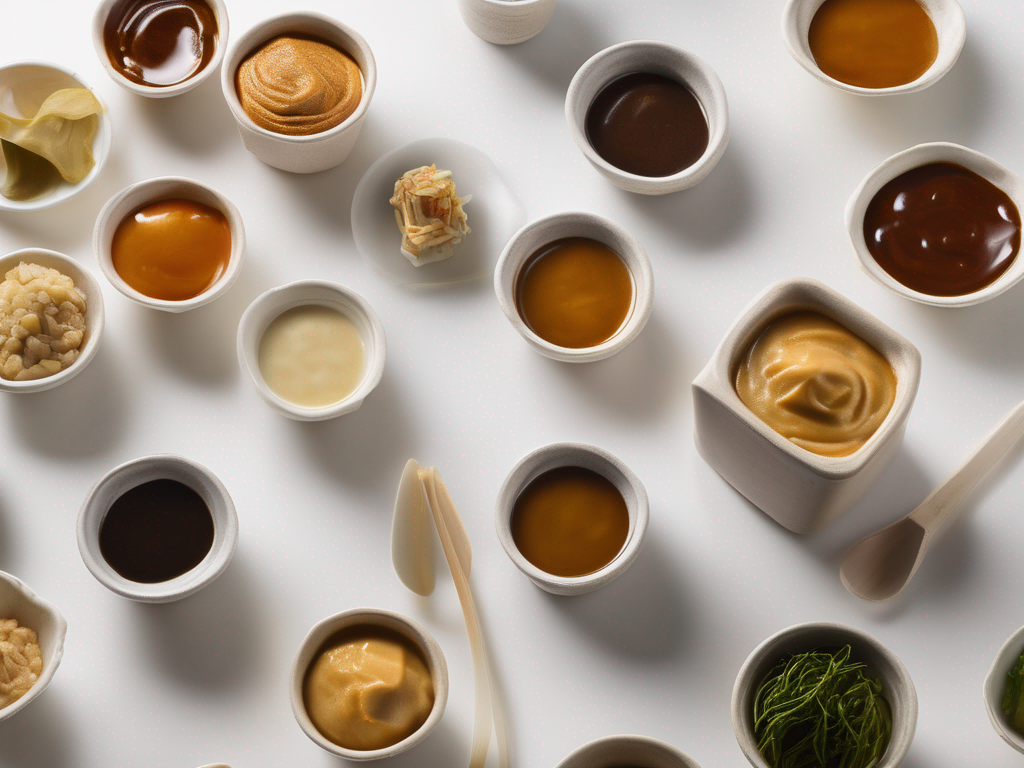
Signs that Miso Paste has Gone Bad
Get Your Free Food Safety Cheat Sheet
30 most common foods with instant answers. Print it and stick it on your fridge—completely free!
Signs that Miso Paste has Gone Bad
Miso paste is a staple ingredient in Japanese cuisine, known for its unique umami flavor and versatility in cooking. While miso paste is a fermented product with a long shelf life, it is essential to know the signs that indicate it has gone bad to prevent foodborne illness. In this blog post, we will discuss the key indicators that your miso paste may have spoiled and provide tips on how to store it properly to extend its freshness. (Miso paste)
Understanding Miso Paste
Before delving into the signs of spoilage, let's first understand what miso paste is. [Miso paste](/food/miso paste) is a traditional Japanese condiment made from fermented soybeans, salt, and koji (a type of fungus). The fermentation process can vary, resulting in different types of miso paste, including white, red, and mixed miso. Miso paste is prized for its rich, savory flavor and is commonly used in soups, marinades, dressings, and glazes.
Shelf Life of Miso Paste
Miso paste has an extended shelf life compared to many other condiments due to its fermentation process. When stored properly in the refrigerator, unopened miso paste can last for up to one year. Once opened, miso paste can retain its quality for several months to a year, depending on the type and storage conditions. However, it is crucial to monitor the paste for any signs of spoilage to ensure its safety for consumption.
Signs that Miso Paste has Gone Bad
Here are the key indicators that your miso paste may have spoiled:
1. Change in Color and Texture
- Color: Fresh miso paste typically has a consistent color based on its type (white, red, or mixed). If you notice any unusual discoloration, such as dark spots or a change in hue, it may indicate spoilage.
- Texture: Miso paste should have a smooth and uniform texture. If you observe any mold growth, pockets of air, or an overly dry or hardened consistency, it is a sign that the miso paste has gone bad.
2. Off Odor
- Aroma: Fresh miso paste has a distinct, pleasant aroma that is savory and slightly tangy. If you detect any sour, rancid, or foul odors coming from the miso paste, it is a clear indication that it has spoiled.
3. Unpleasant Taste
- Flavor: Spoiled miso paste will have an off-putting taste that is sour, bitter, or generally unpleasant. If the flavor profile of the miso paste has significantly changed or tastes "off," it is best to discard it.
4. Growth of Mold or Yeast
- Visual Inspection: Inspect the surface of the miso paste for any signs of mold growth, which may appear as fuzzy patches or spots. Additionally, the presence of yeast or other visible contaminants indicates spoilage and should prompt disposal.
5. Expiration Date
- Label Information: Check the expiration date on the packaging of the miso paste. While miso paste can often be consumed beyond the best-by date, an expired product is more likely to have deteriorated in quality and safety.
Proper Storage Tips for Miso Paste
To prolong the freshness and quality of your miso paste, follow these storage tips:
- Refrigeration: Store miso paste in the refrigerator at all times, even before opening, to slow down the fermentation process and prevent spoilage.
- Air-Tight Container: Transfer miso paste to an air-tight container after opening to protect it from exposure to air and moisture.
- Avoid Cross-Contamination: Use a clean utensil to scoop out miso paste to prevent introducing contaminants that could lead to spoilage.
- Cool, Dark Place: Store miso paste away from direct sunlight and heat sources to maintain its flavor and consistency.
- Rotate Stock: Use older miso paste first before opening a new container to ensure freshness and prevent waste.
Conclusion
In conclusion, miso paste is a versatile and flavorful ingredient that can enhance a variety of dishes. By being aware of the signs that indicate miso paste has gone bad and following proper storage practices, you can enjoy this traditional condiment safely. Remember to trust your senses when assessing the quality of miso paste, and when in doubt, it is best to discard it to avoid the risk of foodborne illness. By incorporating these tips into your culinary routine, you can savor the rich flavors of miso paste while ensuring food safety. (Miso paste)
Authoritative Food Safety References
These agencies and university labs inform every tip and health precaution we publish.
USDA FoodKeeper – Cold Storage Guidelines
Official refrigerator, freezer, and pantry timelines maintained by the U.S. Department of Agriculture.
Visit USDA FoodKeeperFDA Produce Safety Rule & Grower Guidance
Field-to-fridge handling practices that prevent contamination of fruits, vegetables, and leafy greens.
Visit FDA Produce SafetyCDC Foodborne Illness Prevention Hub
Surveillance-backed guidance on pathogens, symptoms, and steps to reduce foodborne illness risk.
Visit CDC Food SafetyUC Davis Postharvest Technology Center
University research detailing optimal storage atmospheres for produce after harvest.
Visit UC Davis PostharvestPenn State Extension – Home Food Preservation & Safety
Peer-reviewed extension bulletins on safe canning, chilling, and reheating practices.
Visit Penn State ExtensionGet Your Free Food Safety Cheat Sheet
30 most common foods with instant answers. Print it and stick it on your fridge—completely free! Want more? Upgrade to the complete guide with 70+ foods.
Scan your food directly and get instant safety info using our AI-powered camera feature.